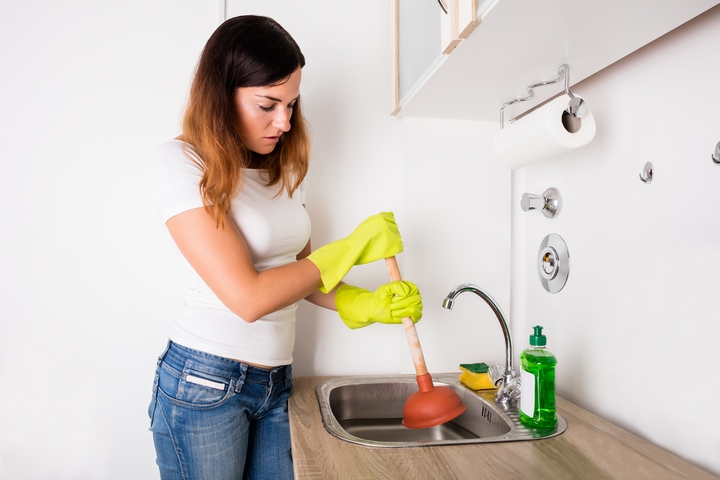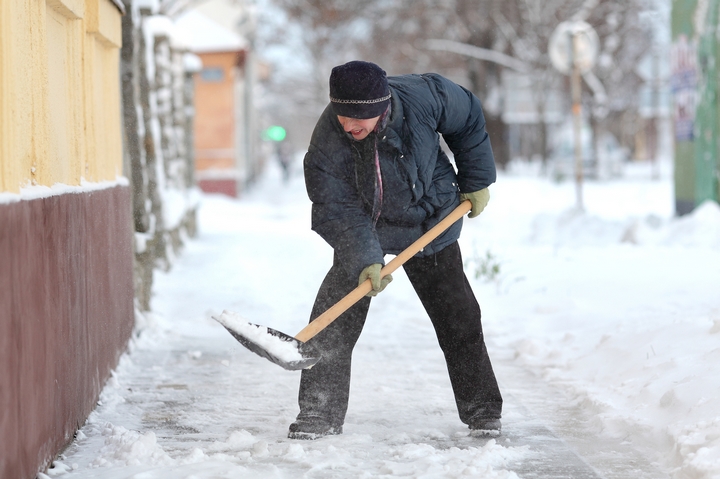We take our kitchen sink for granted. Any mess we make in the kitchen while preparing food is quickly cleaned up with the help of the running water in our sink. We rinse and wash dishes and pots, pans and cutlery, and wastewater quietly down the drain. What if it doesn’t?
There is nothing more frustrating than a clogged kitchen sink. You can’t put it off because it is too vital of an appliance. So, how can you fix this common plumbing problem?
Here is what you do when your kitchen sink won’t drain:
1. Boiling Water
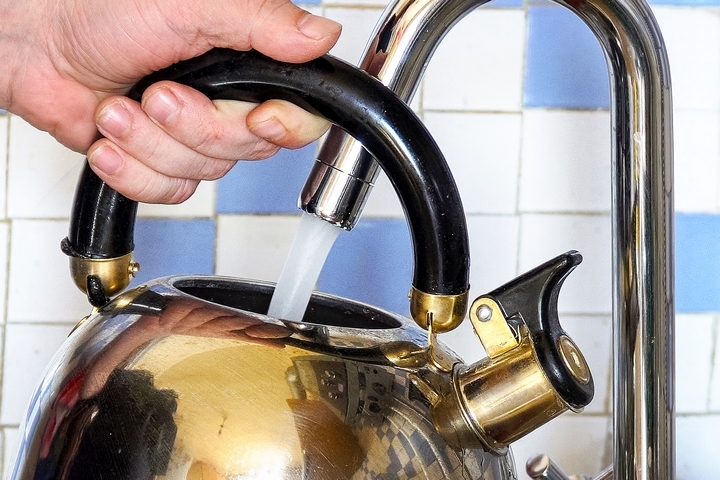
Water is made to go down the sink, and when it is hot, it can melt away any residual buildup in your kitchen drain. Boil a large kettle and slowly pour it down the drain. The longer the stream lasts, the better it has more time to loosen up and dissolve debris. Repeat the process several times until the drain is clear.
2. Plunger

A plunger is an effective tool for clearing all drains in the house from the toilet to the kitchen sink, but not with the same one. Buy yourself a dedicated kitchen plunger and keep it under the sink for safekeeping. They are usually shorter handled versions for plunging in the kitchen.
Pour enough water in the sink, so the plunger head is submerged and then make a tight seal over the drain. Use steady, forceful up and down movements to create pressure and suction, so it knocks loose all blockages and allows them to be washed away. Follow up with hot water to make sure it is all clear.
3. Plumber

This doesn’t have to be the last resort, as a qualified plumber can save you a lot of grief and get you up and running again. They have the right tools and training to make your clogged sink fast work. Some companies provide 24 hour emergency service, so if you need your sink repaired after regular working hours, they are there to come to your aid.
4. Commercial Drain Cleaner
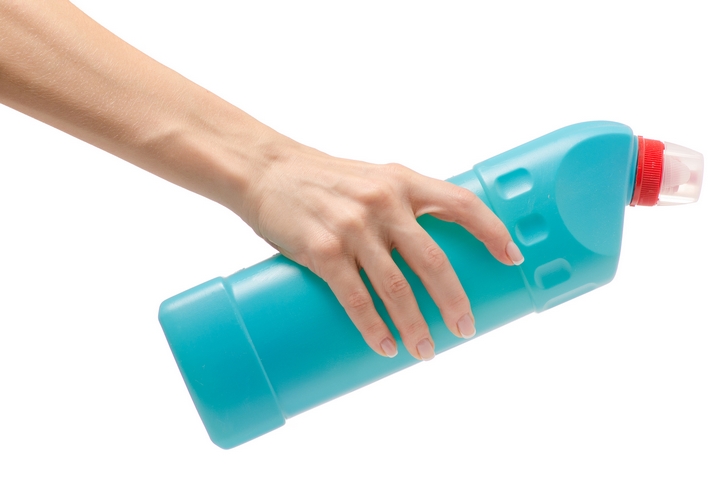
Several familiar products on the store shelves do a good job clearing clogged sinks. They have powerful chemicals inside, so wear protective gear when using them. Follow the instructions on the bottle and if necessary, repeat the process until it is cleared.
5. DIY Cleaner
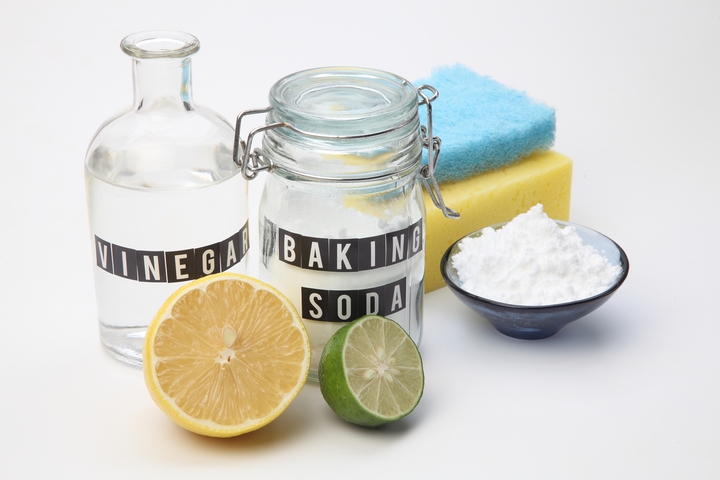
If you want to take a more natural approach, you can use some common household items that you probably already have. This is going to take baking soda and vinegar.
Pour 1 cup of baking soda down the drain and follow it with 1 cup of vinegar. A chemical reaction will start and needs around an hour to do its magic. From there, you can pour boiling water down the drain. Alternatively, you can mix the two ingredients and pour the slurry down the drain. This may need to be repeated several times.
6. Clean P-Trap
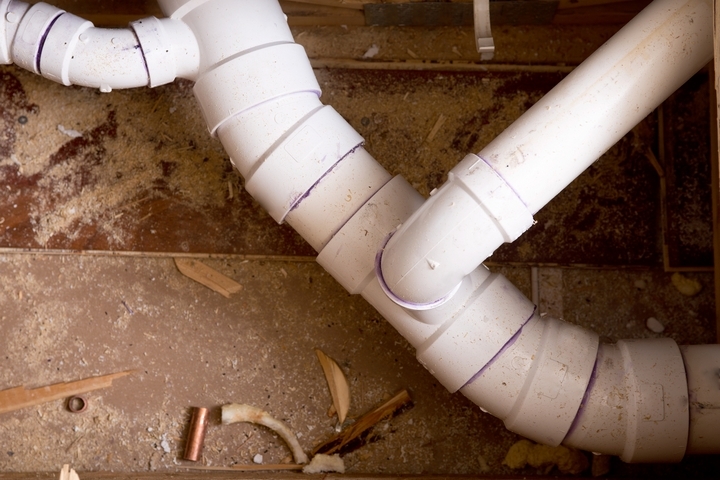
This job is a little more hands-on and will require a bucket and some towels in case of spills. Unscrew the slip joint nuts on either side of the sink trap and allow any water to drain into the bucket. You may need a wrench for this. Be careful to put aside the O rings so they don’t get thrown away and then pour out the pipe’s contents. Try to dig out the blockage with a wire coat hanger or spoon if you can’t reach it with your fingers. Give it a good rinse in another sink to be completely clear, and reassemble all the parts together.
Run the water to see if this has solved the problem. If not, use a plumbers snake to get deeper down the pipe by taking it apart again.
7. Assess Your Habits
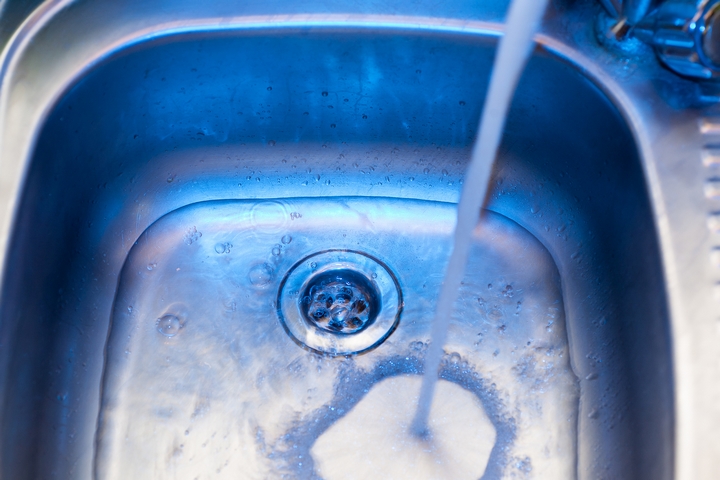
Now that you have successfully unclogged your kitchen drain, it’s time to think about why it happened in the first place. The simple answer is, you put the wrong things down the drain. Why does a kitchen sink clog? Here are some common items that are the culprits:
- Soap Scum: This is when soap mixes with the minerals in your water and builds upon the drain pipes.
- Oil & Grease: Oil at cooking temperatures is liquid, but when dumped down the sink, it quickly turns solid and can clog your sink. This includes bacon fat, butter, and cooking oils like coconut oil.
- Food Scraps: We expect them to wash away, but they get caught up in the gunk on the sides of the drain pipe. Scrape off your dishes before rinsing them in the sink.
- Coffee Grounds: Wet coffee grounds are dense and don’t break up as they go down the drain. They easily build up until you have a blockage.
The best defence is a good offence, so watch what gets washed down the kitchen sink drain. Follow these methods and get back to washing and rinsing like a pro when you get an issue.

